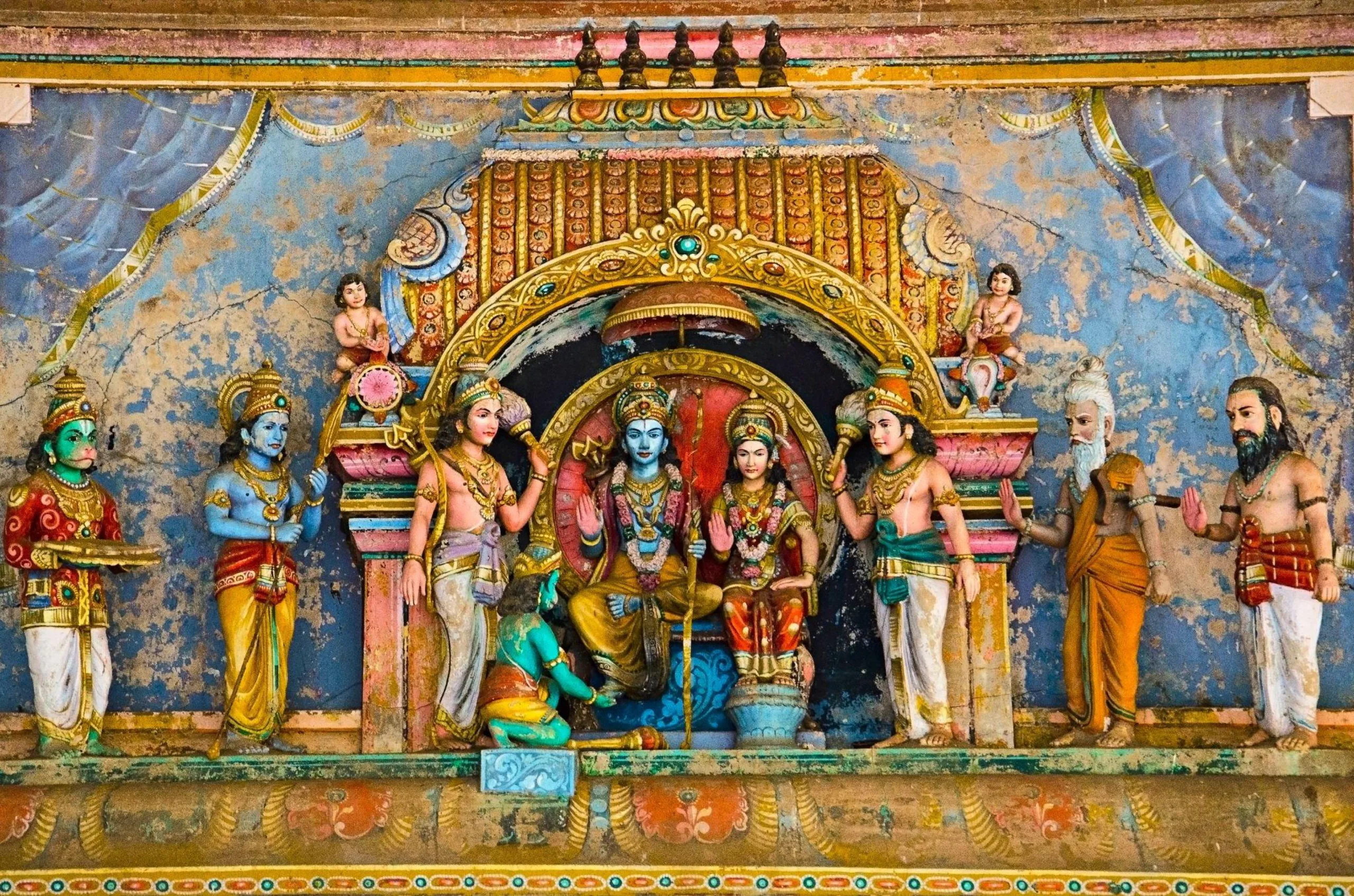Advaita and Dvaita are two major schools of Vedanta philosophy with differing views on the nature of reality and the relation between Brahman, Atman and the world.
Advaita
Advaita, propounded by Adi Shankaracharya, is a non-dualistic school that believes that Brahman and Atman are identical. It teaches that:
- Brahman alone is real, the world is illusory (Brahma satyam, jagat mithya).
- Atman and Brahman are one and the same. There is no difference between the individual soul and the supreme soul.
- The apparent difference and diversity in the world is due to maya or ignorance.
- The goal is to attain self-realization or knowledge of one’s identity with Brahman. This leads to moksha or liberation from the cycle of rebirth.
The key teaching is “tat tvam asi” – “thou art that”, meaning the individual self (Atman) is identical to the supreme self (Brahman).
Dvaita
Dvaita, propounded by Madhvacharya, is a dualistic school that believes Brahman, Atman and the world are real but distinct entities. It teaches that:
- Brahman, Atman and the world are three separate and eternal realities.
- There are five fundamental differences – between Brahman and Atman, Atman and Atman, Atman and the world, Brahman and the world, and within the world.
- Vishnu or Narayana is the supreme Brahman.
- Devotion and surrender to Vishnu leads to moksha or liberation.
The key teaching is of difference – “bheda” – between Brahman, Atman and the world.
In summary, Advaita believes in the oneness and identity of Brahman and Atman, while Dvaita believes in their difference and distinctness. Advaita stresses self-knowledge while Dvaita emphasizes devotion to God. But both agree that moksha or liberation is the ultimate goal of human life.
What are the key differences between the concepts of maya in Advaita and Dvaita?
In Advaita Vedanta, Maya and Avidya play an important role in explaining the appearance of duality and the relative world.
Maya
Maya refers to the cosmic creative power or illusion that conceals the true nature of Brahman and projects the appearance of the relative world. It is the power through which Brahman “appears” as the world.
Maya has two aspects – avaranashakti (the veiling power) and vikshepashakti (the projecting power). Through avaranashakti, Maya conceals the true nature of Brahman. Through vikshepashakti, Maya projects the appearance of the relative world and individual souls.
Maya is neither truly existent nor non-existent. It is mithya – something that is neither sat (truly existent) nor asat (non-existent). Maya is the relative, phenomenal level of reality.
At the absolute level, only Brahman is real. The world appears through Maya but is ultimately unreal. It is a dependent reality, dependent on Brahman for its appearance.
Avidya
Avidya refers to the ignorance of individuals regarding their true nature. It is the lack of knowledge that “I am Brahman”.
Avidya is the cause of bondage for individual souls. Due to Avidya, the soul sees itself as separate from Brahman and gets caught up in the relative world created by Maya.
Avidya has two aspects – adhyasa (superimposition) and anadhyasa (non-superimposition). Through adhyasa, the attributes of the body and mind are superimposed on the self. Through anadhyasa, the true nature of the self is not recognized.
Avidya can be destroyed through knowledge of the truth – that the individual self is identical with Brahman. This leads to vidya or wisdom and moksha or liberation from bondage.
The Difference
- Maya is the cosmic power that veils the nature of Brahman and projects the appearance of the relative world. It operates at the macro level.
- Avidya refers to the ignorance at the individual level that one is not Brahman. It is the lack of knowledge that “I am Brahman”.
- Maya objectively veils the nature of Brahman. Avidya subjectively veils the self in ignorance of its true nature.
- Maya is the cause of the relative world. Avidya is the cause of bondage for individual souls.
- Maya cannot be destroyed but remains as long as the relative world exists. Avidya can be destroyed through knowledge of the truth.
In summary, Maya refers to the cosmic power of illusion that projects the relative world. Avidya refers to the individual ignorance that veils the self in bondage. Maya is the cause of the world, Avidya is the cause of bondage of souls. But ultimately, both are necessary to explain the appearance of duality and the relative world from the perspective of non-dual Brahman.
Hope this helps explain the difference between Maya and Avidya in Advaita Vedanta!









